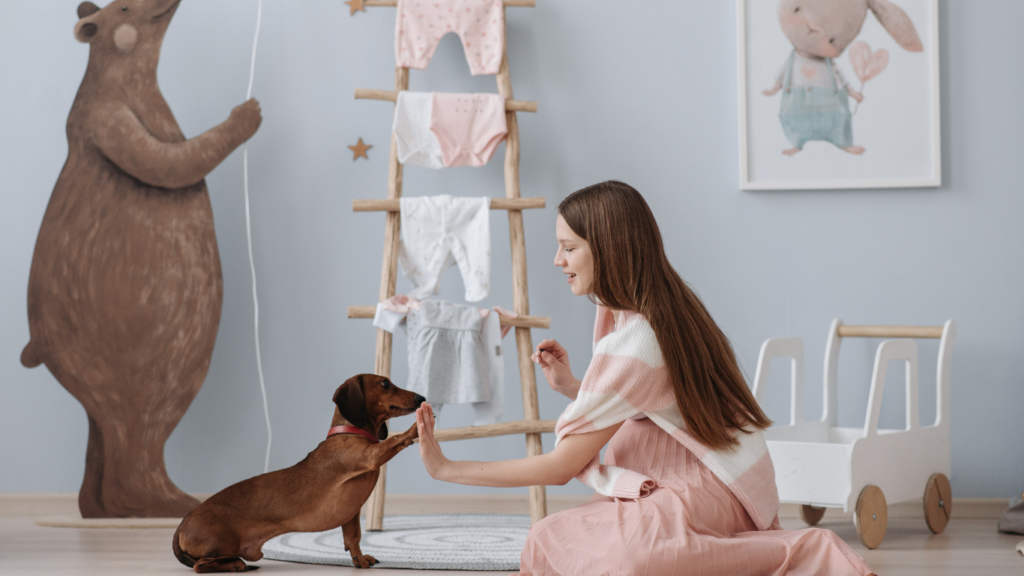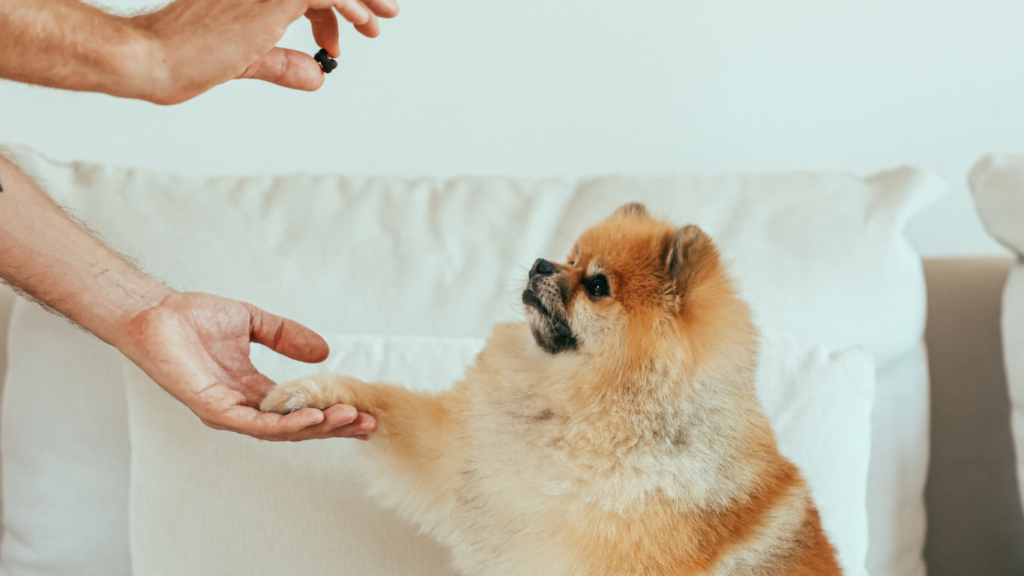Understanding Positive Reinforcement
Positive reinforcement involves rewarding your pet to encourage desired behaviors. It focuses on rewards rather than punishments.
Definition and Principles
Positive reinforcement is a training method where desirable behavior is rewarded, making that behavior more likely to occur. Common rewards include treats, praise, games, and toys.
The primary principle is to immediately reward the behavior to create a clear association in your pet’s mind. Timing is crucial; the reward should come right after the behavior to be effective. This method relies on the science of operant conditioning, which shows that behaviors followed by positive outcomes tend to be repeated.
Benefits of Positive Reinforcement
Positive reinforcement offers numerous advantages.
First, it strengthens the bond between you and your pet, creating a relationship built on trust and cooperation.
Second, it enhances motivation since pets are typically eager to repeat behaviors that earn them rewards.
Third, this method can reduce stress and anxiety, leading to a happier and more confident pet. Training sessions become enjoyable experiences rather than stressful ones, fostering a positive learning environment.
Positive reinforcement also promotes long-term behavioral changes since pets internalize and enjoy the rewards associated with good behavior.
Getting Started With Positive Reinforcement Training

Positive reinforcement training begins with the right tools and a well-planned schedule.
Essential Tools and Supplies
Several tools and supplies support positive reinforcement training:
- Treats: High-value treats, such as small pieces of chicken, cheese, or commercial training treats, reward desired behaviors effectively.
- Clicker: A clicker marks precise moments of good behavior, allowing immediate reward.
- Leash and Collar: These help control your pet’s movement during training sessions, ensuring safety and focus.
- Patience: Training requires patience to consistently reinforce behaviors.
- Treat Pouch: Keeps treats handy and accessible for quick reinforcement.
Setting Up a Training Schedule
A structured schedule enhances training effectiveness:
- Short Sessions: Keep sessions 5-10 minutes to maintain your pet’s attention.
- Consistency: Train at the same time daily to establish a routine.
- Frequency: Aim for at least 2-3 sessions daily for consistent reinforcement.
- Location: Use quiet environments initially, gradually introducing distractions.
- Breaks: Allow breaks between sessions to prevent fatigue and maintain enthusiasm.
Positive reinforcement training becomes more effective with the right tools and a consistent schedule, fostering a rewarding experience for both you and your pet.
Techniques and Tips for Effective Training
Positive reinforcement relies on timing, rewards, and consistency. To train your pet effectively, adopt the following techniques and tips.
Reward Systems and Timing
I use a variety of treats to keep my pet motivated. Soft treats, small pieces of chicken, or commercial pet snacks work well. Offering the reward immediately after the desired behavior ensures the pet associates the action with the treat.
It’s crucial to deliver the reward within seconds to create a clear connection. Clicker training can also be effective, where the sound marks the correct behavior followed by a treat, reinforcing the behavior quickly and efficiently.
Consistency and Patience
Consistency is key to successful training. I stick to a consistent routine and use the same commands each time to avoid confusion. Training sessions should be short, around 5-10 minutes, and frequent, ideally several times a day.
I remain patient, as some pets learn faster than others. Patience coupled with consistent practice helps build a strong foundation for new behaviors. If my pet doesn’t respond as expected, I avoid punishing them and instead, focus on reinforcing positive actions.
Incorporating Commands and Cues
Clear commands and cues are essential for effective training. I introduce one command or cue at a time, ensuring my pet masters it before moving on to the next.
For example, “sit” or “stay” should be practiced until my pet responds reliably. I use a firm, friendly tone without shouting, reinforcing commands with rewards and praise. Adding hand signals can also aid in communication, especially if vocal commands alone prove insufficient.
Common Mistakes to Avoid
Training your pet with positive reinforcement has numerous benefits, but several common mistakes can hinder progress. To ensure success, it’s essential to avoid these pitfalls.
Overfeeding Treats
Overfeeding treats can lead to weight gain and health issues. I make sure to use small, low-calorie treats during training sessions to keep my pet engaged without excessive calories.
For example, I might use tiny pieces of chicken or specialized training treats. Monitoring portion sizes and adjusting meal quantities accordingly prevents overfeeding.
Inconsistent Rewards
Consistent rewards are crucial for effective training. I always reward my pet right after a desired behavior to make the connection clear. For instance, if my dog sits on command, I’ll immediately give a treat and praise. Inconsistent rewards can confuse pets and slow down their learning process. So, I stick to a regular reward system to maintain predictability.
Ignoring Unwanted Behaviors
Ignoring unwanted behaviors allows them to persist. Instead, I redirect my pet to perform a desired action when they misbehave. For instance, if my cat scratches furniture, I’ll guide her to a scratching post and reward her for using it. Addressing unwanted behaviors promptly and appropriately helps in establishing clear behavioral expectations.
Success Stories and Case Studies
Positive reinforcement training has led to countless pet training success stories. Here are some notable examples and insights from experts in the field.
Real-life Examples
Buddy the Beagle:
Buddy struggled with excessive barking and jumping on guests. Using positive reinforcement, I introduced a clicker and treats. When Buddy stayed calm, I clicked and rewarded him. Within four weeks, Buddy’s barking decreased by 70%, and he greeted visitors calmly.
Luna the Labrador:
Luna had issues with leash pulling during walks. I used positive reinforcement by rewarding her with treats every time she walked beside me without pulling. Consistent practice led to significant improvement. After six weeks, Luna walked with a loose leash 80% of the time.
Whiskers the Cat:
Whiskers would scratch furniture instead of using his scratching post. I trained him by rewarding him with his favorite treats whenever he used the post. This method redirected his behavior. After two months, Whiskers stopped scratching the furniture entirely.
Expert Insights
Dr. Sophia Yin, Veterinarian:
Dr. Yin advocated for the use of positive reinforcement in pet training. She stated that this method is effective because it encourages pets to repeat desired behaviors. Her studies demonstrated that dogs trained with positive reinforcement learn new commands 50% faster than those trained with punishment.
Karen Pryor, Animal Behaviorist:
Karen Pryor, a pioneer in clicker training, emphasized that positive reinforcement builds a strong bond between pets and owners. Her research showed that positive reinforcement reduces stress in animals, making them more receptive to training. According to her findings, using rewards increased training success rates by 60%.
Jean Donaldson, Dog Trainer:
Jean highlighted the importance of timing in positive reinforcement. She noted that rewarding pets within seconds of desired behavior significantly increases learning efficiency. In her experience, dogs trained with precise timing respond to commands 40% more reliably than those with delayed rewards.
These success stories and expert insights demonstrate the effectiveness and benefits of using positive reinforcement methods for training pets.




